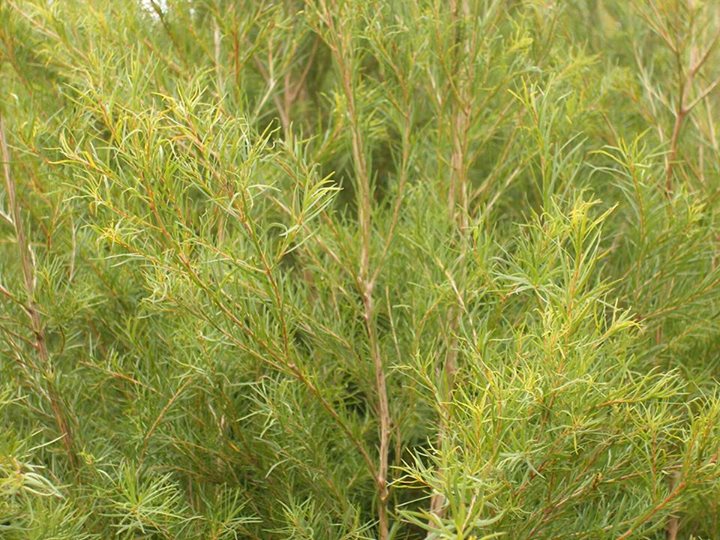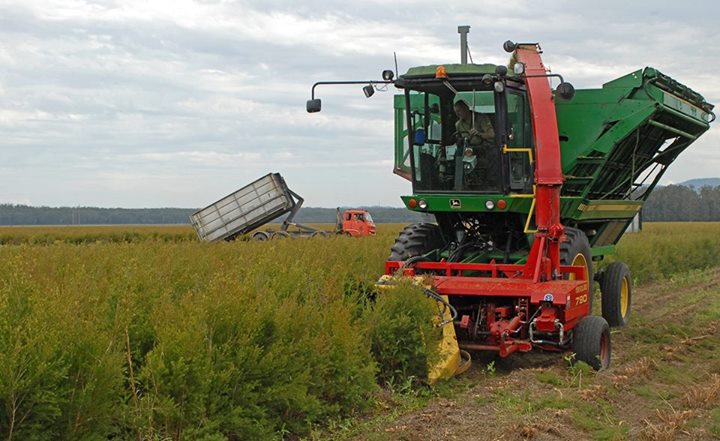Profiles in Essential Oils Dec 2014: Tea Tree Oil 11 years ago
Tea tree oil is the volatile oil obtained by steam distillation of the leaves of Melaleuca alternifolia with an average oil yield of about 1% by mass (but can range from 0.5-3%). Tea tree has been successfully cultivated in Guatemala, Kenya, Zimbabwe, India, Vietnam, China and Australia. Australian tea tree oil is the largest in terms of production and considered by most to be the highest quality oil in the world. Due to growing demand many suppliers are adulterating Australian tea tree oil with inferior Chinese tea tree oil which is chemically very similar but can bet detected, even at low levels of adulteration, based on experienced odor evaluation, chiral GC/MS testing and Optical Rotation measurements.
Tea tree oil is often referred to as simply Melaleuca oil although this name is not really desirable among EO educators and aficionados because of the fact that there are several different Melaleuca species which are relevant to the essential oil and aromatherapy markets. Melaleuca quinquenervia (Niaouli), Melaleuca cajeputi (Cajeput) and Melaleuca ericifolia (Rosalina) to name a few are just some of the Melaleuca genus that are involved in EO production which is why referring to Tea Tree oil as Melaleuca oil is not desirable as this would only add further confusion in a industry where confusion abounds.
The EOU Standard for Tea Tree Oil shown below is a bit more strict than the ISO standard which was last updated in 2004 (ISO 4730:2004(E)) so any oil passing the EOU standard will also meet ISO specs. It should also be noted that the EOU standard monitors more components than the ISO standard and is FREE to everyone (ISO standards are only available to purchase for $60 each and cannot be shared). The EOU Standard is simply a benchmark for quality. It is realized that natural variations can cause truly natural oils to have specifications outside of these ranges but these ranges would have to be adhered to before EOU would approve any sample for purchase for any of its clients. All of the below ranges would be considered when calculating the overall EOU Score (based on 100 points possible) for the oil being evaluated.
EOU Standard For Tea Tree Oil
Table I. Physical Constants
| Constant | Value |
|---|---|
| Appearance | Colorless to pale yellow mobile oil |
| Odor | Terpenic with slighty camphoraceous and sweet cineolic notes and spicy/peppery dryout. |
| Specific Gravity (20 C) | 0.887 - 0.905 |
| Refractive Index (20 C) | 1.4750 - 1.4810 |
| Optical Rotation (20 C) | +8 to +15 |
| Flashpoint | avg 59 deg C closed cup |
Table II. Chemical Component Ranges (GC%)
| Chemical Component | Range (GC%) |
|---|---|
| alpha-Pinene | 1.00 - 5.00 |
| Sabinene | 0.10 - 3.00 |
| alpha-Terpinene | 6.00 - 13.00 |
| Limonene | 0.50 - 1.50 |
| p-Cymene | 0.50 - 5.00 |
| 1,8-Cineole | 0.01 - 5.00 |
| gamma-Terpinene | 15.00 - 25.00 |
| Terpinolene | 2.00 - 5.00 |
| Terpinene-4-ol | 33.00 - 47.00 |
| alpha-Terpineol | 2.00 - 5.00 |
| beta-Caryophyllene | 0.10 - 1.00 |
| Aromadendrene | 0.10 - 3.00 |
| Viridiflorene (Ledene) | 0.50 - 3.00 |
| Bicyclogermacrene | 0.50 - 3.00 |
| delta-Cadinene | 0.50 - 3.00 |
| Globulol | 0.01 - 1.00 |
| Viridiflorol | 0.01 - 1.00 |
Table III. Enantiomeric Distribution of Key Chiral Components as Determined by Chiral GC/MS
| Chemical Component | D | L |
|---|---|---|
| Terpinen-4-ol | 68-72% | 32-28% |


